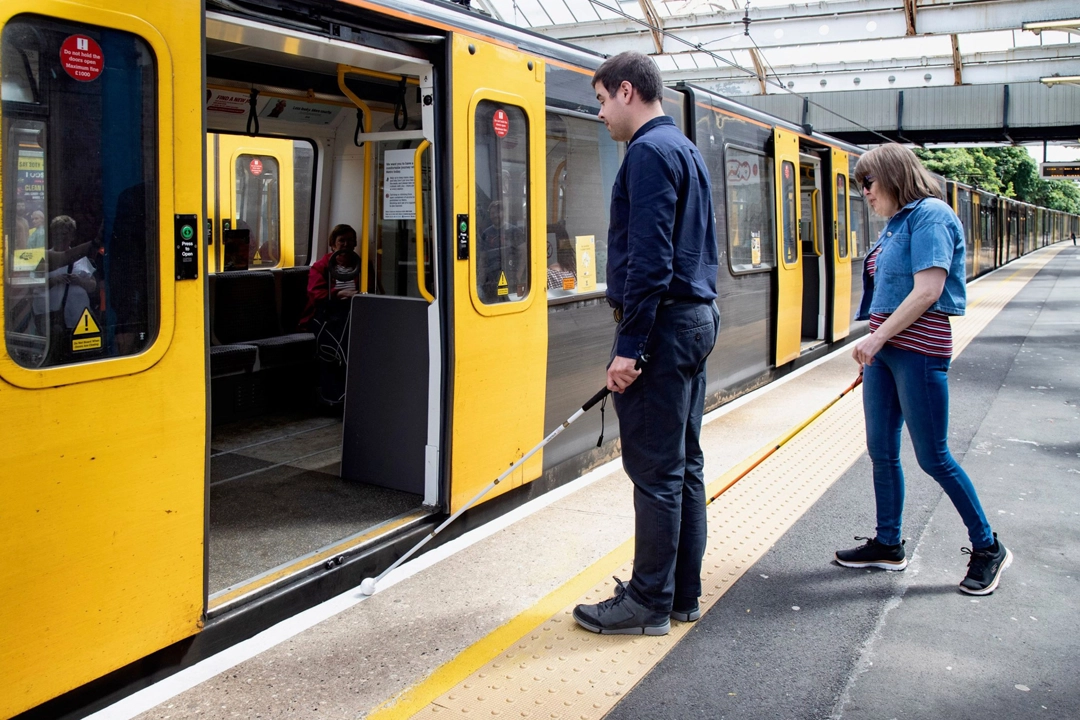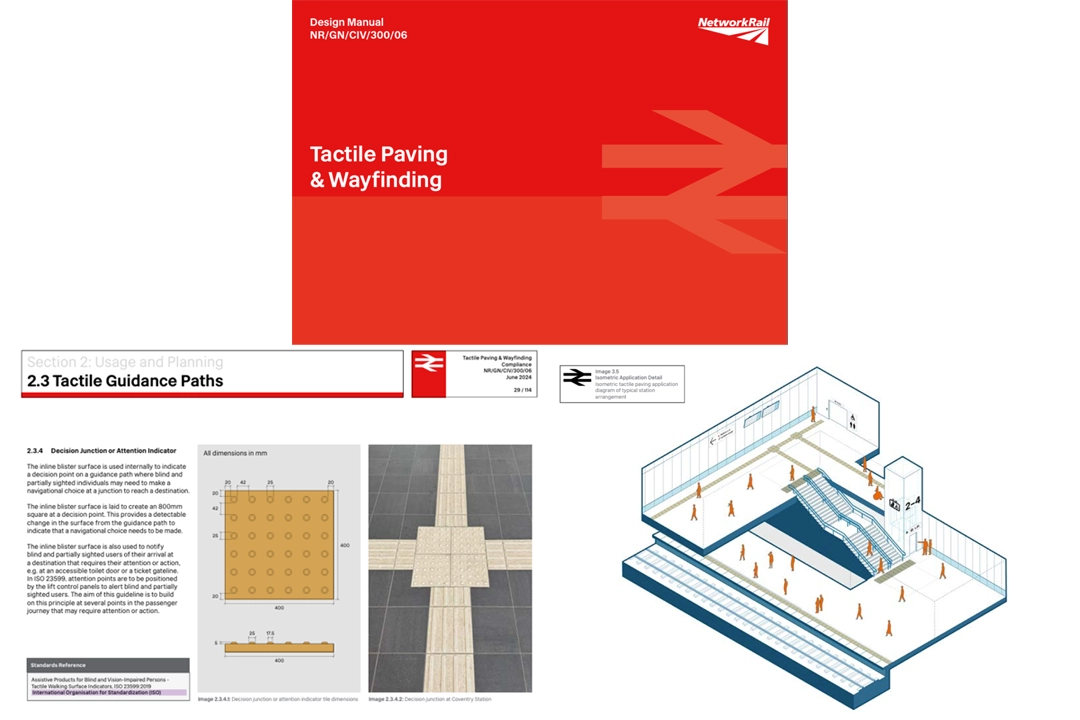
Improving rail accessibility through tactile paving standards
Network Rail
Network Rail technical authority commissioned Mima to lead the development of NR’s first design guideline document for the application of tactile paving for stations.
The Challenge
Network Rail technical authority commissioned Mima to lead the development of NR’s first design guideline document for the application of tactile paving for stations, to provide a confident and consistent guideline and approach for those implementing tactile paving for navigation and hazard warning purposes across infrastructure projects in rail stations. The intended users of the document were the design teams and suppliers applying tactile hazard warnings and tactile guidance paths in a range of projects including new stations, station extensions and older station upgrades. The guidance is aimed at anyone involved in the briefing, design, delivery, renewal and maintenance of publicly accessible buildings on the Network Rail estate.
Tactile paving is a type of textured ground surface used across various environments to assist those who are blind and partially sighted. Differing tactile patterns (such as blisters and lozenges) on the paving are used to convey distinct meanings and purposes to users. The paving is designed to be easily detectable underfoot or by long cane, and serves two primary purposes: to provide warnings for safety, and to provide navigation and guidance. Tactile paving plays a crucial role in enhancing the safety and independence of individuals who are blind and partially sighted, allowing them to navigate environments with confidence and reducing the risk of accidents or injury.
The installation and use of tactile paving can promote:
- Accessibility and independence
- Orientation and guidance
- Safety
- Efficiency and ease of navigation
- And, ultimately, better social inclusion
The Solution
To develop the design guideline Mima performed lived experience research with blind and partially sighted passengers. We also facilitated an industry steering panel with representatives from Network Rail (NR), Department for Transport (DfT), Great British Railways (GBRR), Rail Safety and Standards Board (RSSB), Train Operating Companies and Independent Access Consultants. The document was also developed in consultation with the Royal National Institute of Blind People (RNIB) and Blind Veterans UK.
The design guideline is divided into four sections:
1 - What are the benefits and limitations of tactile paving
2 - How to use the different tactile paving types and how to plan guidance routes
3 - How to apply tactile paving
4 - Material and finishes
The guideline also includes two appendix sections
A - Lived experience profiles gathered from user research. These describe the journeys of blind and partially sighted passengers, as well as those with mobility impairments and equipment. The aim of these profiles is to explain to readers how various passengers will interact with tactile paving to navigate through a station environment, so that understanding and empathy can be built.
B - Example applications showing best practice benchmarking and common mistakes.
Within the guidelines the feedback stresses that tactile paving is not a sole solution, nor should it be considered as such - it does not remove the need for staff presence, or well considered design, operations and technologies elsewhere in the station environment, for example.
The Full Design manual is available on the Network Rail for public access here.
The Impact
By developing Network Rail’s first tactile paving design guideline manual, Mima helped translate lived experience research and industry consultation into design guidance that aims to improve the consistency of application of tactile paving within the UK rail station environment, with an overall aim to improve safety and support independent travel for blind and partially sighted passengers.





